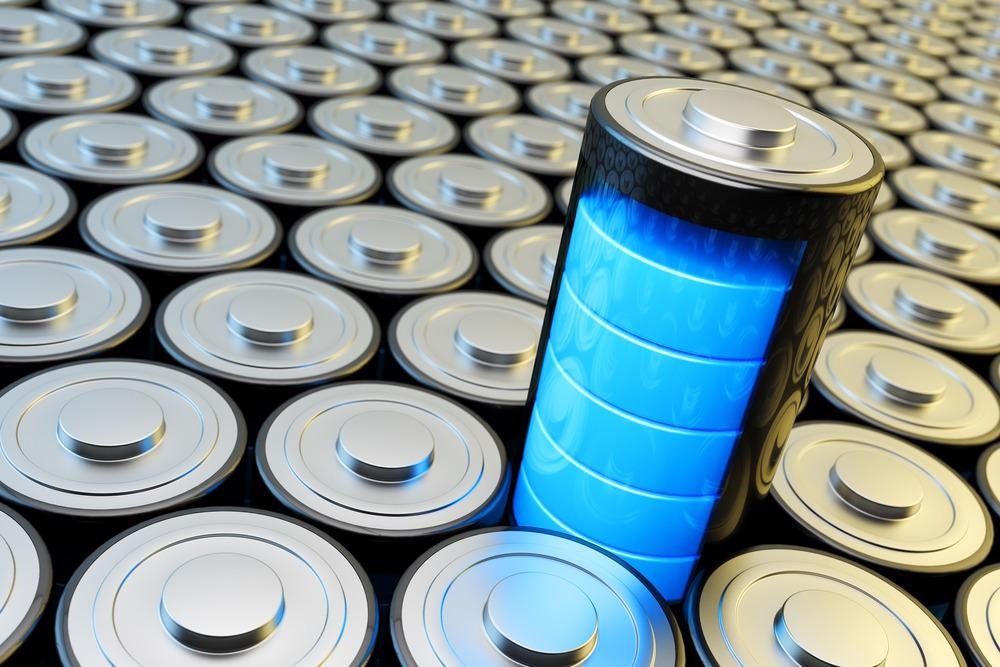A MXene-carbon dots nanocomposite has been suggested as a next-generation nanomaterial for green energy production due to its excellent durability and higher efficiency than comparative materials.

Image Credit: cybrain/Shutterstock.com
The demand for improved energy storage and energy materials is increasing rapidly with advancements in technology. Modern emerging technologies, solar cells, electric vehicles, and portable gadgets require energy storage and conversion alternatives to fulfill their energy demands and deliver adequate, long-life, and high energy density.
Materials for lithium-ion batteries, supercapacitors, water splitting, and fuel cells are constantly sought after in the hunt for sustainable energy solutions. These challenges are met by an advanced generation of nanomaterials being developed.
What are MXenes?
MXenes are two-dimensional materials formed from the MAX bulk crystal. Because MXenes are sheets produced from the carbides and nitrides of transition metals, they have great volumetric capacitance and naturally superior conductivity. MXenes have already found use in various fields, including optoelectronics, medicine, and energy storage applications.
MXene Carbon Dot Nanocomposite
Several carbon nanocomposites can be formed, ranging from cellulose metal oxide nanocomposites, metal oxide-carbon nanostructures and metals‑carbon nanostructures.
For the formation of all these carbon nanocomposites, the use of carbon dots has become an emerging technology because of their stability, easy synthetic method, abundant surface characteristics and low cost.
MXene-carbon dots nanocomposites are one of the most talked-about materials for energy applications since they can improve ion mitigation and electron transportation, specific capacitance, and induce quick redox reactions.
The addition of MXene to the carbon nanocomposite modified several features by improving electrochemical performance, lowering self-stacking, and enhancing ion and charge transport channels.
Nanocomposite Use in Energy Storage Applications
MXene carbon dot nanocomposite is used in energy storage in several ways, like in supercapacitors, solar cells, and as electrode material in batteries.
Supercapacitors
Supercapacitors are made up of materials that can maintain stability and improve specific capacitance for longer periods. Carbon dot nanocomposite and MXenes individually possess conductive and hydrophilic properties enabling them to be utilized for the assembly of supercapacitors. Therefore the hybrid of these two gives exceptional properties.
Although MXene has a layer restacking challenge associated with it, intercalating or decorating with carbon nanodots improves the electroactivity of this material due to the functional group interaction. This eventually enhances the energy and electron density of the supercapacitor.
The hybrid MXene carbon dot nanocomposite has a higher capacitance retention ability and specific capacitance compared to the individual components.
Solar Cells
MXene carbon dot nanocomposite creates a suitable environment for solar energy absorption. This helps the transportation of photogenerated charge carriers within the matrix, which leads to improved carbon dioxide reduction efficiency and greater charge separation.
The properties of this composite are appropriate for tailoring surface terminations for greater optical properties, which makes it suitable for next-generation photovoltaic cells. The properties of MXene carbon dot nanocomposite like high conductivity and transparency, tunable work function, and outstanding flexibility enable it to be used as ultrathin active film materials in new generation solar cell technology.
Batteries
One of the most commonly used batteries in electric vehicles and portable electronics is the lithium-sulfur (Li-S) battery. However, there are several drawbacks associated with these batteries, including low columbic efficiency, slow redox process, fast capacity fading, and low sulfur utilization.
These drawbacks are due to large volume variations associated with sulfur cathodes, the dissolution of lithium polysulphide, and the poor conductivity of sulfur.
These challenges are avoided by using MXene carbon dot nanocomposites, which play a good host to the sulfur in the batteries. MXene, when used in isolation, causes low cyclability, poor sulfur loading, and aggregation. Therefore when carbon dots are integrated into MXene, it causes high sulfur loading due to the formation of high volume porosity and huge surface area, which speeds up the electron-charge transfer and prevents aggregation.
As MXene carbon nanoparticles are hydrophilic, conductive and structurally interconnected, they may readily chemisorb the intermediate polar lithium polysulphide, improving columbic efficiency, cyclization and sulphur utilization.
Future Outlook
MXene carbon dot nanocomposites have gained attention in recent years because of their low toxicity, inertness and biocompatibility. These materials are gaining more and more fame because of the inherent pliability of their surface groups.
In the future, the introduction of pseudocapacitive particles into the nanocomposite can be done to provide accommodations to high voltage electrolyte ions, boosting energy density and specific capacitance.
MXenes have a tendency to form clusters when their surface coordinating groups coordinate with metals. Carbon dots include such coordinating groups, which might lead to MXene-Metal-Carbon dots clusters, increasing stability and resulting in improved electrochemical performance, high retention capacity, reduced degradation, abundant active surfaces, efficient charge transfer, and enhanced interaction.
References and Further Reading
Berger, M., MXene - what is it, how it is made, what it is used for. [online] Nanowerk.com. Available at: <https://www.nanowerk.com/mxene.php> [Accessed 13 May 2022].
Elemike, E. E., Adeyemi, J., Onwudiwe, D. C., Wei, L., & Oyedeji, A. O. (2022). The future of energy materials: A case of MXenes-carbon dots nanocomposites. Journal of Energy Storage, 50, 104711. https://doi.org/10.1016/j.est.2022.104711
Zhang, A., Liu, R., Tian, J., Huang, W., & Liu, J. (2020). MXene‐based nanocomposites for energy conversion and storage applications. Chemistry–A European Journal, 26(29), 6342-6359. https://doi.org/10.1002/chem.202000191
Disclaimer: The views expressed here are those of the author expressed in their private capacity and do not necessarily represent the views of AZoM.com Limited T/A AZoNetwork the owner and operator of this website. This disclaimer forms part of the Terms and conditions of use of this website.